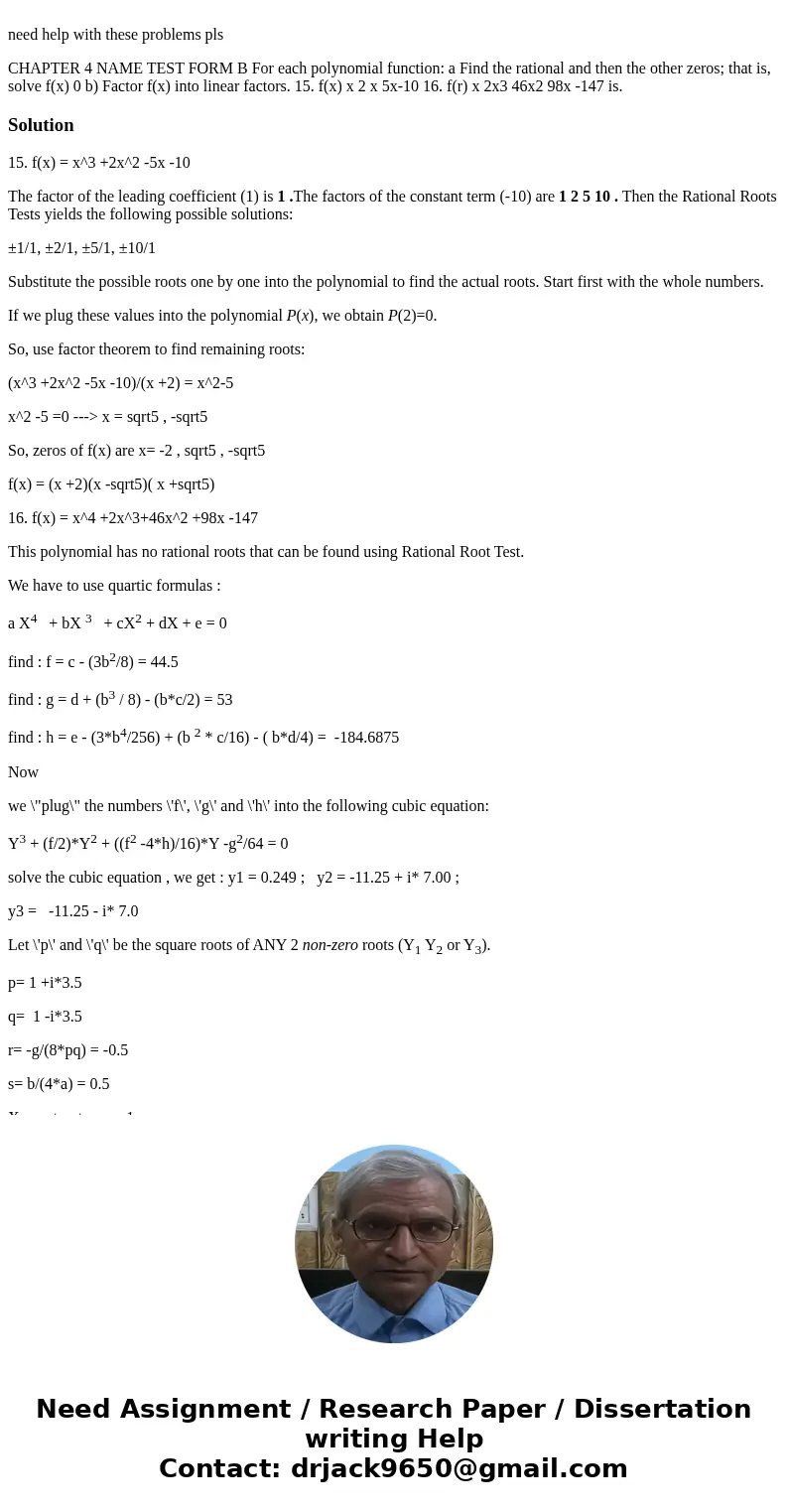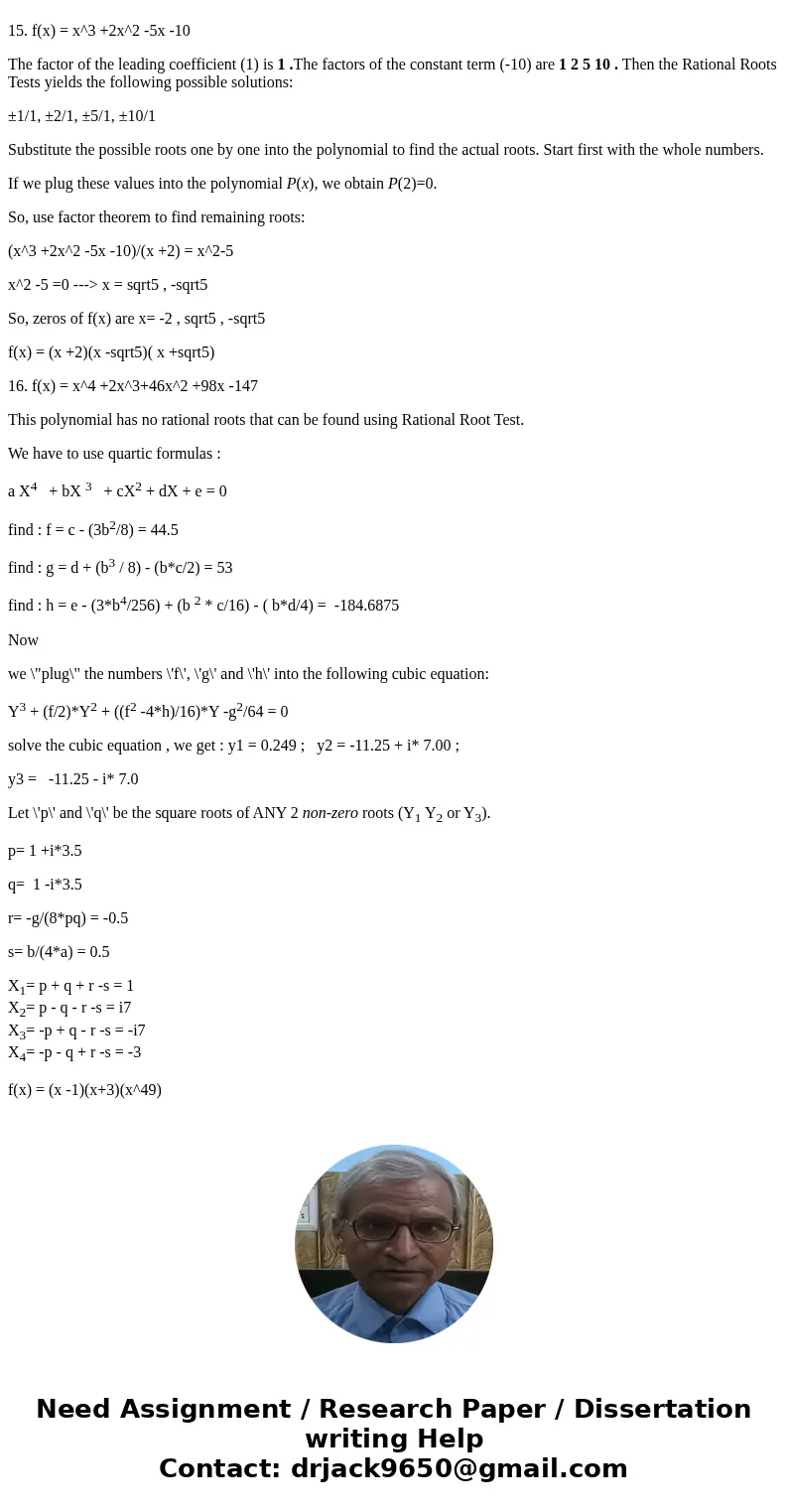need help with these problems pls CHAPTER 4 NAME TEST FORM B
need help with these problems pls
Solution
15. f(x) = x^3 +2x^2 -5x -10
The factor of the leading coefficient (1) is 1 .The factors of the constant term (-10) are 1 2 5 10 . Then the Rational Roots Tests yields the following possible solutions:
±1/1, ±2/1, ±5/1, ±10/1
Substitute the possible roots one by one into the polynomial to find the actual roots. Start first with the whole numbers.
If we plug these values into the polynomial P(x), we obtain P(2)=0.
So, use factor theorem to find remaining roots:
(x^3 +2x^2 -5x -10)/(x +2) = x^2-5
x^2 -5 =0 ---> x = sqrt5 , -sqrt5
So, zeros of f(x) are x= -2 , sqrt5 , -sqrt5
f(x) = (x +2)(x -sqrt5)( x +sqrt5)
16. f(x) = x^4 +2x^3+46x^2 +98x -147
This polynomial has no rational roots that can be found using Rational Root Test.
We have to use quartic formulas :
a X4 + bX 3 + cX2 + dX + e = 0
find : f = c - (3b2/8) = 44.5
find : g = d + (b3 / 8) - (b*c/2) = 53
find : h = e - (3*b4/256) + (b 2 * c/16) - ( b*d/4) = -184.6875
Now
we \"plug\" the numbers \'f\', \'g\' and \'h\' into the following cubic equation:
Y3 + (f/2)*Y2 + ((f2 -4*h)/16)*Y -g2/64 = 0
solve the cubic equation , we get : y1 = 0.249 ; y2 = -11.25 + i* 7.00 ;
y3 = -11.25 - i* 7.0
Let \'p\' and \'q\' be the square roots of ANY 2 non-zero roots (Y1 Y2 or Y3).
p= 1 +i*3.5
q= 1 -i*3.5
r= -g/(8*pq) = -0.5
s= b/(4*a) = 0.5
X1= p + q + r -s = 1
X2= p - q - r -s = i7
X3= -p + q - r -s = -i7
X4= -p - q + r -s = -3
f(x) = (x -1)(x+3)(x^49)


 Homework Sourse
Homework Sourse